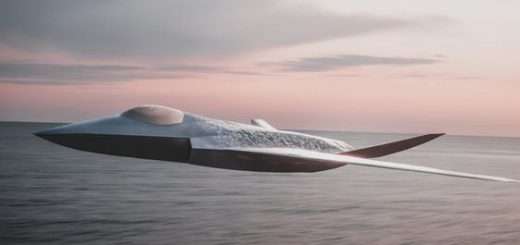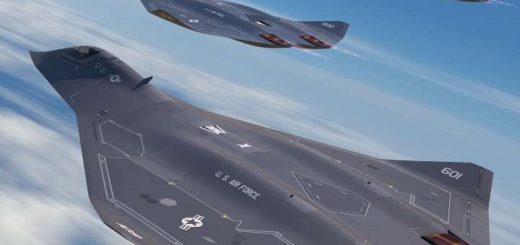BAE Tempest will be the Future fighter for the Royal Air force
A virtual briefing was given by the branch’s Team Tempest and the Royal Air Force Capabilities Office to present information on the upcoming “Tempest” sixth-generation fighter. The UK Ministry of Defence also unveiled an updated artist’s rendering of the new fighter along with business updates and discussions regarding the program’s development (shown above). Defense contractors working on various components of the next aircraft make up Team Tempest, and they have made some ridiculous promises about the capabilities of this new fighter. The program’s industrial partners include Rolls-Royce, Leonardo, MBDA, and BAE Systems (the aircraft lead).
Like the U.S. Air Force’s Next Generation Air Dominance program (NGAD), the Tempest aims to leapfrog the capabilities offered by the world’s most advanced fighter jets in operation today–5th generation fighters like the F-35, F-22, J-20, and Su-57. However, the leap from the 5th to 6th generation is more about marketing than it is about function. Generational designations are effectively just industry shorthand to describe the design and production process that went into a platform.
While there are no formal requirements for the informal title of “6th generation” fighter, there are a number of assumptions defense experts have made regarding the capabilities such a jet would need to bring to the table. You can read a more thorough breakdown of those capabilities in our analysis of the 6th generation of fighters here. In the interest of brevity, some anticipated capabilities include the use of artificial intelligence to assist the pilot, the ability to manage drones in support of the fighter, and all the advancements that came along in the 5th generation, including stealth and data fusion.
According to this graphic created by c, the Tempest promises to meet each of those requirements.

In order to build upon the data fusion success of flying supercomputers like the F-35, Tempest’s project lead for electronics and avionics Leonardo has been developing a new Multi-Function Radar Frequency System specifically for the new fighter.
This system will leverage massive amounts of computing power to collect and process a claimed 10,000 times the data of existing radar systems. As Leonardo puts it, the Tempest will be able to gather and process the “equivalent to the internet traffic of a large city every second,” offering it’s pilot a positively unmatched degree of situational awareness. If the F-35 is considered a “quarterback in the sky,” Leonardo hopes to make the Tempest into an offensive coordinator.
In keeping with that breadth of awareness, BAE aims to create what would effectively be a virtual cockpit pilot that will use in conjunction with a similar augmented reality interface to that of the F-35. Pilots would be able to customize every facet of the cockpit around them, using digital switches that can be rapidly re-mapped to serve different roles. The helmet interface and heads-up display would allow the pilot to place the information they need where they can use it most.












